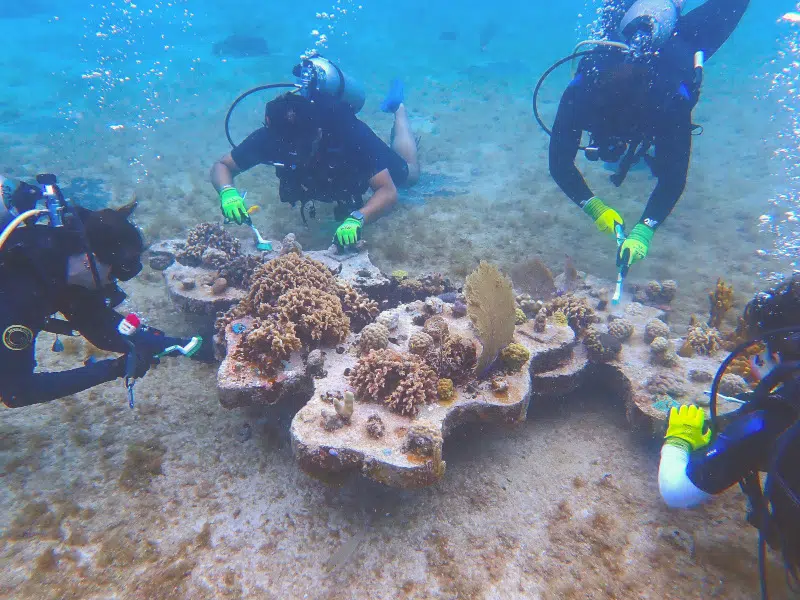
Coral Reefs Created with 3D Printing Aid in the Rehabilitation of Ecosystems in the Mexican Caribbean

**Thrasos’ Sargassum Composite 3D Printed Structures: An Eco-Friendly Approach to Coral Reef Restoration**
Cozumel, a top tourist hotspot in Mexico, is confronting serious environmental issues as climate change and overtourism jeopardize its lively ecosystems, especially the coral reefs that attract millions of tourists. Rising temperatures and human interventions have resulted in considerable coral bleaching, a pressing concern that the Cozumel Coral Reef Restoration Program (CCRRP) is proactively working to resolve. Committed to restoring and safeguarding these vital marine environments, CCRRP utilizes cutting-edge methods to tackle coral reef degradation.
The CCRRP was founded by Dr. German Mendez, inspired to take action after observing the catastrophic impacts of a cruise ship dock construction in 1994, which destroyed nearly 97% of the corals at Villa Blanca Reef. His commitment led to the creation of the CCRRP, which became a nonprofit organization in 2017. This initiative has led the way in coral restoration, concentrating on the development of coral nurseries. These underwater constructs, made from various materials, facilitate coral growth by shielding them from rapidly growing algae and other adversities.
Throughout the years, CCRRP has explored multiple materials for these platforms. The initial concrete platforms were not conducive to coral attachment. This prompted investigations into alternative substrates, including calcium carbonate-coated recycled rebar grids, designed to entice coral polyps. Recently, sargassum has emerged as a crucial element in developing substrates through innovative technologies like 3D printing, thanks to a partnership with Thrasos and Interceramic.
3D printing has transformed the fabrication of structures for coral attachment. By using a blend of sargassum and coralline, Thrasos has created complex 3D-printed geometric shapes. These structures establish an appealing habitat for coral polyps, fostering healthy and thriving coral colonies.
These platforms not only provide protection against environmental pressures but also improve the survival and growth rates of corals compared to those in open waters. The CCRRP’s approach has displayed success, with over 10,000 corals planted across a 2,153-square-foot area using 35 platforms. The program evaluates its achievements by tracking fish aggregation, the growth of coral fragments, and color assessment to gauge bleaching risks.
As CCRRP persists in its essential initiatives, they encourage worldwide involvement in their mission. Individuals from across the globe can participate by becoming certified divers to assist in the upkeep of the coral nurseries. For those unable to travel, contributing donations and raising awareness on social media are vital methods to support their cause.
Restoring Cozumel’s coral reefs is essential not only for maintaining marine biodiversity but also for sustaining the local economy and the ecosystem services provided by reefs. Through these conservation efforts, CCRRP aspires to set a standard for sustainable development, ensuring that the natural splendor and ecological stability of Cozumel remain intact for future generations.
For additional details or to support the Cozumel Coral Reef Restoration Program, please visit their [website](https://www.ccrrp.mx/) or follow them on [Instagram](https://www.instagram.com/cozumelcoralreefrestoration).